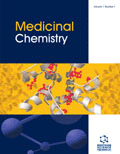
Medicinal Chemistry
Scope & Guideline
Driving excellence in medicinal chemistry and toxicology.
Introduction
Aims and Scopes
- Drug Design and Synthesis:
The journal emphasizes the design and synthesis of new chemical entities with potential therapeutic applications, employing advanced synthetic methodologies and innovative chemical strategies. - Structure-Activity Relationships (SAR):
Research often includes detailed studies on the structure-activity relationships of compounds, aiming to optimize their pharmacological properties and efficacy. - Biological Evaluation:
Papers frequently report on the biological evaluation of newly synthesized compounds, including in vitro and in vivo studies, to assess their therapeutic potential against various diseases. - Target Identification and Mechanism of Action:
The journal covers studies that identify biological targets for new drugs and elucidate their mechanisms of action, contributing to a deeper understanding of drug efficacy. - Natural Products and Derivatives:
There is a notable interest in the modification and evaluation of natural products, exploring their potential as leads for new drug development. - Interdisciplinary Approaches:
The journal promotes interdisciplinary research that combines medicinal chemistry with molecular biology, pharmacology, and computational modeling to enhance drug discovery efforts.
Trending and Emerging
- PROTACs and Targeted Protein Degradation:
There is a growing interest in the development of PROTACs (proteolysis-targeting chimeras) as a novel strategy for targeted protein degradation, which has become a significant focus in cancer therapeutics. - Nanotechnology in Drug Delivery:
Emerging research highlights the application of nanotechnology for targeted drug delivery systems, enhancing the efficacy and reducing the side effects of therapeutic agents. - Biologics and Bioconjugates:
The rise of biologics, including monoclonal antibodies and their conjugates, is evident, with research increasingly focusing on their design, synthesis, and therapeutic applications. - Antiviral Drug Development:
In light of recent global health challenges, there has been a marked increase in research aimed at developing antiviral agents, particularly against emerging viruses like SARS-CoV-2. - Artificial Intelligence in Drug Discovery:
The integration of artificial intelligence and machine learning in drug design and discovery processes is becoming a prominent theme, facilitating faster and more efficient identification of potential drug candidates. - Focus on Multi-Target Agents:
There is an emerging trend towards the design of multi-target agents that can simultaneously address multiple pathways or mechanisms, reflecting a shift in the approach to complex diseases.
Declining or Waning
- Traditional Small Molecule Inhibitors:
Research focusing solely on traditional small molecule inhibitors without novel modifications or innovative delivery systems seems to be less common, as the field shifts towards more complex and multifunctional agents. - Single Target Drug Development:
There is a noticeable decrease in studies centered around single-target drug development, as the trend moves towards multitargeted approaches and polypharmacology to address complex diseases. - Basic Pharmacokinetic Studies:
Papers that solely focus on basic pharmacokinetic studies without integrating them into broader drug design or therapeutic efficacy are becoming less common, signaling a shift towards more comprehensive evaluations. - Conventional Synthetic Methodologies:
The reliance on conventional synthetic methods without exploration of green chemistry or novel synthetic strategies appears to be waning, as there is increasing emphasis on sustainability and efficiency in drug synthesis.
Similar Journals

RSC Medicinal Chemistry
Advancing the Frontiers of Medicinal InnovationRSC Medicinal Chemistry is a pivotal journal in the realm of medicinal chemistry, published by the esteemed Royal Society of Chemistry. With a focus on innovative research that intersects various disciplines such as biochemistry, drug discovery, pharmaceutical science, and organic chemistry, this journal serves as a vital resource for researchers, professionals, and students alike. Its impressive impact factor and notable rankings—positioning it within the Q1 and Q2 quartiles across critical categories—underscore its significance in advancing knowledge and fostering collaboration within the scientific community. RSC Medicinal Chemistry is dedicated to open access, ensuring that cutting-edge findings on drug design and therapeutic applications are freely available to enhance global research efforts. With a commitment to publication excellence from 2020 to 2024, it is a prominent platform where groundbreaking ideas meet practical implications, making it indispensable for anyone committed to the forefront of medicinal advances.
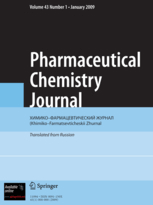
PHARMACEUTICAL CHEMISTRY JOURNAL
Advancing Drug Discovery Through Scholarly Excellence.Pharmaceutical Chemistry Journal is a pivotal publication in the field of pharmaceutical sciences, renowned for its in-depth articles and research findings. Published by Springer in the United States, this journal provides a crucial platform for researchers, students, and professionals dedicated to advancing drug discovery and pharmacology. With an ISSN of 0091-150X and an E-ISSN of 1573-9031, this journal has consistently aimed to promote scholarly communication and innovation within its scope since its inception in 1967. Despite its current Category Quartiles ranking of Q4 in both Drug Discovery and Pharmacology, the journal remains a valuable resource for disseminating new ideas and findings that contribute to the scientific community. Researchers benefit from the journal's commitment to high-quality peer-reviewed content, even in an environment where open access options are currently not available. As the field evolves, the Pharmaceutical Chemistry Journal continues to play an important role in shaping future advancements in drug development and safety.
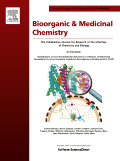
BIOORGANIC & MEDICINAL CHEMISTRY
Advancing the Frontiers of Biochemical ResearchBIOORGANIC & MEDICINAL CHEMISTRY, published by Pergamon-Elsevier Science Ltd, is a prominent journal in the fields of biochemical research and drug discovery, with an ISSN of 0968-0896 and an E-ISSN of 1464-3391. Established in 1993, it has garnered respect and recognition, evidenced by its categorization in various quartile ranks across 2023, including Q2 in Clinical Biochemistry and Pharmaceutical Science. It holds significant Scopus rankings, placing it in the 75th percentile in Pharmaceutical Science and 74th percentile in Organic Chemistry, highlighting its influential contributions to ongoing research and developments. This journal provides a platform for disseminating advancements in bioorganic and medicinal chemistry, focusing on innovative methodologies, therapeutic advancements, and molecular pharmacology. Although it does not follow an open-access model, it remains a key resource for researchers, professionals, and students aiming to stay at the forefront of scientific discovery in the UK and beyond. The journal’s commitment to enhancing knowledge within the biomedical community makes it an essential read for those passionate about this dynamic field.
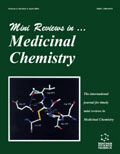
MINI-REVIEWS IN MEDICINAL CHEMISTRY
Empowering Researchers with Concise Reviews of Cutting-edge Science.MINI-REVIEWS IN MEDICINAL CHEMISTRY is a distinguished journal published by Bentham Science Publishers, dedicated to the cutting-edge field of medicinal chemistry. With an ISSN of 1389-5575 and an E-ISSN of 1875-5607, this journal serves as an essential platform for researchers and professionals to disseminate concise yet comprehensive reviews that capture the latest advancements and trends in drug discovery, cancer research, pharmacology, and molecular medicine. Operating since 2001, it has consistently maintained a relevant presence in academia with its impressive rank metrics, including a Q2 category in Drug Discovery and Pharmacology in 2023, highlighting its significance in the scientific community. The journal is recognized for its rigorous peer-review process and provides an invaluable resource for students and researchers seeking insights into the rapidly evolving landscape of medicinal chemistry. With a commitment to excellence and innovation, MINI-REVIEWS IN MEDICINAL CHEMISTRY continues to foster knowledge exchange and inspire future breakthroughs in healthcare and therapeutic advancements.
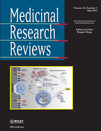
MEDICINAL RESEARCH REVIEWS
Unveiling Insights for Tomorrow’s Health SolutionsMEDICINAL RESEARCH REVIEWS, published by Wiley, is a leading journal in the fields of Drug Discovery, Molecular Medicine, and Pharmacology. With an impressive impact factor and esteemed standing in its category quartiles (Q1 in all three fields), this journal serves as a vital platform for the dissemination of cutting-edge research and reviews that drive innovation in therapeutic development and molecular health sciences. Since its inception in 1981, MEDICINAL RESEARCH REVIEWS has garnered a robust readership within the scientific community, underscored by its high rankings in Scopus – where it ranks #3 in Pharmacology and #2 in Drug Discovery, placing it within the top echelons of academic influence. Researchers, professionals, and students alike benefit from its rich content and comprehensive approaches to tackling complex medicinal challenges, making it an essential resource for those invested in advancing the frontiers of biomedical research.

CURRENT DRUG TARGETS
Pioneering Discoveries in Drug DevelopmentCURRENT DRUG TARGETS is a leading peer-reviewed journal dedicated to advancements in the fields of Clinical Biochemistry, Drug Discovery, Molecular Medicine, and Pharmacology. Published by Bentham Science Publishers Ltd, this esteemed journal has solidified its position in the academic community with a 2023 Q2 ranking in several categories, highlighting its influence and relevance in drug research and development. With an ISSN of 1389-4501 and E-ISSN 1873-5592, CURRENT DRUG TARGETS facilitates the dissemination of high-quality articles that explore novel therapeutic strategies and drug design principles. Catered to researchers, professionals, and students, the journal has a commitment to advancing knowledge while addressing contemporary challenges in pharmacological sciences. As it converges from 2000 to 2024, CURRENT DRUG TARGETS remains a vital resource in understanding the complexities of drug action and interaction, making it indispensable for anyone pursuing cutting-edge research in related disciplines.
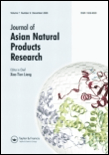
JOURNAL OF ASIAN NATURAL PRODUCTS RESEARCH
Transforming Nature's Gifts into Scientific BreakthroughsJOURNAL OF ASIAN NATURAL PRODUCTS RESEARCH is a prestigious publication in the field of natural products, focusing on valuable research spanning analytical chemistry, pharmacology, and complementary medicine. Published by Taylor & Francis Ltd in the United Kingdom, this journal has established itself as a key resource for academics and professionals seeking to explore advancements in drug discovery and organic chemistry. With a converged publication timeline from 1998 to 2024, the journal boasts several commendable category quartiles as of 2023, reflecting its robust standing in the research community: Q2 in Complementary and Alternative Medicine, Q3 in multiple domains including Analytical Chemistry and Organic Chemistry, and Q4 in Molecular Medicine. Although it currently does not offer open access, the journal remains a valuable compendium for empirical research and innovative studies in areas such as pharmacology and medicinal chemistry. Researchers, professionals, and students alike will find the JOURNAL OF ASIAN NATURAL PRODUCTS RESEARCH to be an essential platform for sharing groundbreaking findings and fostering collaborations that lead to significant advancements in science and health.

CHEMICAL & PHARMACEUTICAL BULLETIN
Delivering critical insights for the evolving fields of chemistry and medicine.CHEMICAL & PHARMACEUTICAL BULLETIN, published by the Pharmaceutical Society of Japan, has been a cornerstone in the fields of chemistry, drug discovery, and medicine since its inception in 1958. With an ISSN of 0009-2363, this esteemed journal offers a platform for the dissemination of innovative research and critical insights contributing to these dynamic disciplines. Housed in Tokyo, Japan, it is strategically poised to bridge the gap between chemical sciences and pharmaceutical applications. Although the journal operates under a traditional subscription model and does not currently offer open access, it maintains a solid reputation, evidenced by its Q3 category rankings in multiple relevant fields and its percentile positions in Scopus, specifically 48th in General Chemistry and 30th in Drug Discovery. Researchers, professionals, and students alike will find invaluable resources within its pages, as it diligently covers shifting paradigms and emerging methodologies critical to advancing both theoretical understanding and practical applications in the pharmaceutical realm.
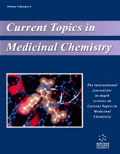
CURRENT TOPICS IN MEDICINAL CHEMISTRY
Advancing the Frontiers of Medicinal ChemistryCURRENT TOPICS IN MEDICINAL CHEMISTRY is a prestigious journal published by Bentham Science Publishers Ltd, dedicated to advancing the field of medicinal chemistry through the dissemination of high-quality research from 2001 to 2024. With an ISSN of 1568-0266 and an E-ISSN of 1873-4294, this journal is recognized for its significant contributions, as evidenced by its Scopus ranking in the 63rd percentile in the category of Drug Discovery, specifically at position #58 out of 157. Currently placed in Quartile 3 within Drug Discovery and Quartile 2 in miscellaneous medicine as of 2023, it serves as an essential resource for researchers, professionals, and students interested in the latest developments, methodologies, and applications in medicinal chemistry. The journal aims to foster collaboration and innovation by featuring original research articles, reviews, and brief communications that address current and emerging challenges in the discipline. Although it is not an open access platform, the journal's rich content is indispensable for those striving to enhance therapeutic strategies and drug development processes.
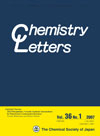
CHEMISTRY LETTERS
Advancing the frontiers of chemistry research.Chemistry Letters, published by the Chemical Society of Japan, is a distinguished academic journal that focuses on pivotal developments in the field of chemistry. Since its inception in 1973, the journal has been a vital platform for the dissemination of novel research findings across various sub-disciplines, encompassing both theoretical advancements and practical applications. As a testament to its significance in the community, Chemistry Letters has achieved a Category Quartile of Q2 in the 2023 ranking for miscellaneous Chemistry journals, reflecting its respected position among peers. Although it does not offer Open Access, the journal remains accessible through institutional subscriptions, thus ensuring a wide reach for its valuable content. With an active scope ranging from general chemistry topics to specialized studies, it is ideal for researchers, professionals, and students alike who seek to contribute to and expand their knowledge within this dynamic field. The journal continuously aims to promote excellence in chemical research, facilitating dialogue and collaboration among chemists worldwide.